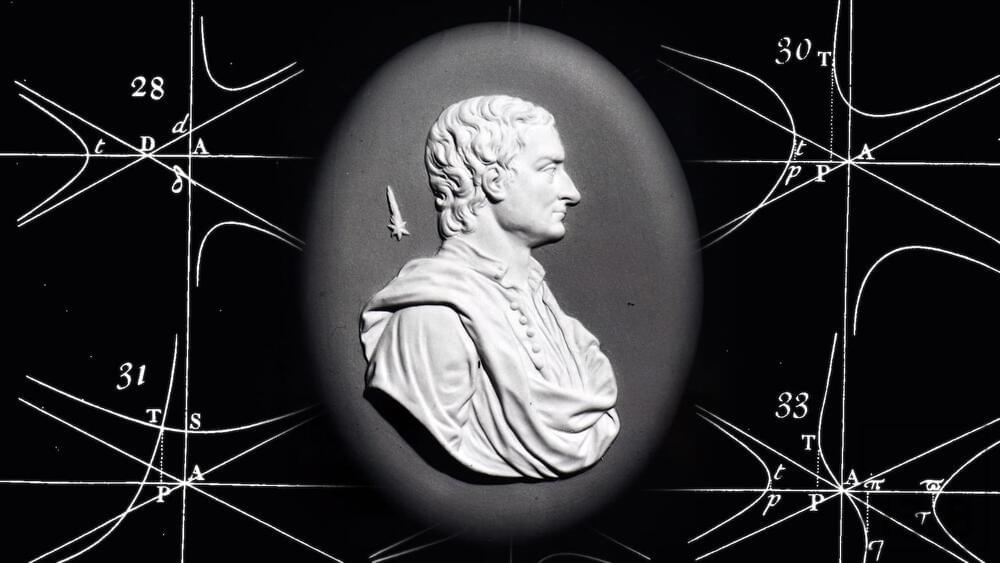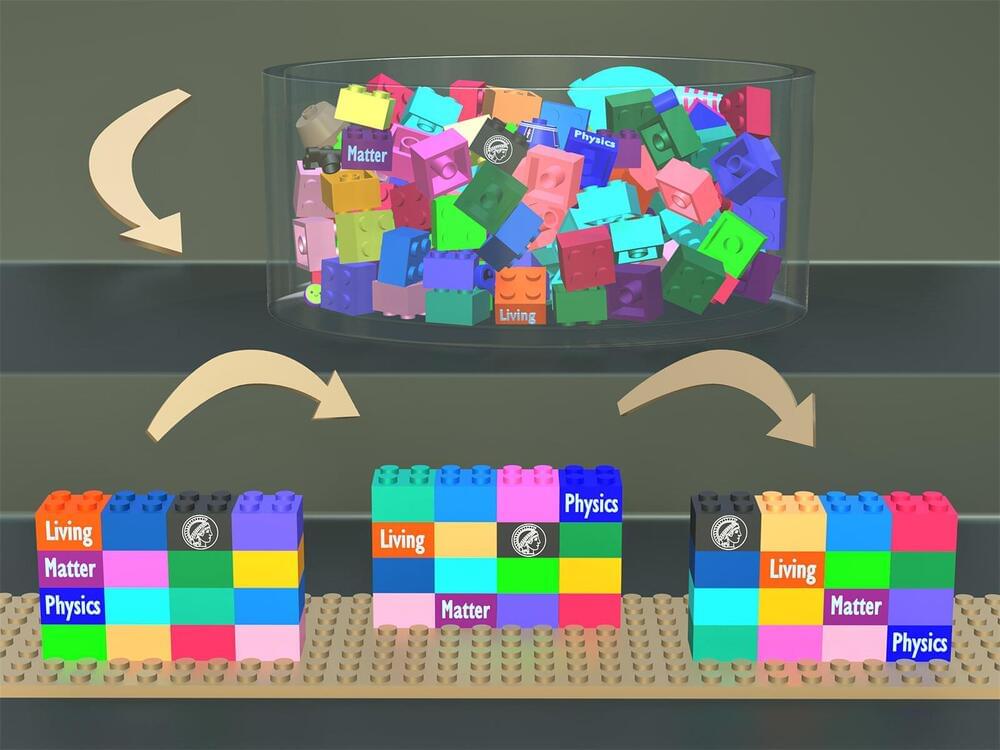From physics and alchemy to theology and eschatology, Isaac Newton’s research was rooted in a personal pursuit of the Divine.


Support us! https://www.patreon.com/mlst.
If you don’t like the background music, we published a version with it all removed here — https://anchor.fm/machinelearningstreettalk/episodes/Music-R…on-e1sf1l7
David Chalmers is a professor of philosophy and neural science at New York University, and an honorary professor of philosophy at the Australian National University. He is the co-director of the Center for Mind, Brain, and Consciousness, as well as the PhilPapers Foundation. His research focuses on the philosophy of mind, especially consciousness, and its connection to fields such as cognitive science, physics, and technology. He also investigates areas such as the philosophy of language, metaphysics, and epistemology. With his impressive breadth of knowledge and experience, David Chalmers is a leader in the philosophical community.
The central challenge for consciousness studies is to explain how something immaterial, subjective, and personal can arise out of something material, objective, and impersonal. This is illustrated by the example of a bat, whose sensory experience is much different from ours, making it difficult to imagine what it’s like to be one. Thomas Nagel’s “inconceivability argument” has its advantages and disadvantages, but ultimately it is impossible to solve the mind-body problem due to the subjective nature of experience. This is further explored by examining the concept of philosophical zombies, which are physically and behaviorally indistinguishable from conscious humans yet lack conscious experience. This has implications for the Hard Problem of Consciousness, which is the attempt to explain how mental states are linked to neurophysiological activity. The Chinese Room Argument is used as a thought experiment to explain why physicality may be insufficient to be the source of the subjective, coherent experience we call consciousness. Despite much debate, the Hard Problem of Consciousness remains unsolved. Chalmers has been working on a functional approach to decide whether large language models are, or could be conscious.
Filmed at #neurips22
Discord: https://discord.gg/aNPkGUQtc5
Dark matter is an archetype of a missing phenomenon, but there are plenty of potential explanations for it.
This video explores the timelapse of artificial intelligence from 2030 to 10,000A.D.+. Watch this next video about Super Intelligent AI and why it will be unstoppable: https://youtu.be/xPvo9YYHTjE
► Support This Channel: https://www.patreon.com/futurebusinesstech.
► Udacity: Up To 75% Off All Courses (Biggest Discount Ever): https://bit.ly/3j9pIRZ
► Brilliant: Learn Science And Math Interactively (20% Off): https://bit.ly/3HAznLL
► Jasper AI: Write 5x Faster With Artificial Intelligence: https://bit.ly/3MIPSYp.
SOURCES:
• https://www.futuretimeline.net.
• The Singularity Is Near: When Humans Transcend Biology (Ray Kurzweil): https://amzn.to/3ftOhXI
• The Future of Humanity (Michio Kaku): https://amzn.to/3Gz8ffA
• Physics of the Future (Michio Kaku): https://amzn.to/33NP7f7
• Physics of the Impossible (Michio Kaku): https://amzn.to/3wSBR4D
• AI 2041: 10 Visions of Our Future (Kai-Fu Lee & Chen Qiufan): https://amzn.to/3bxWat6
Official Discord Server: https://discord.gg/R8cYEWpCzK
💡 Future Business Tech explores the future of technology and the world.
Examples of topics I cover include:
• Artificial Intelligence.
• Genetic Engineering.
• Virtual and Augmented Reality.
• Space Exploration.
• Science Fiction.
SUBSCRIBE: https://bit.ly/3geLDGO

The laws of physics do not exist, a theoretical physicist named Sankar Das Sarma argues in a new column published by New Scientist. While we define the laws as the “ultimate laws” of our universe, Sarma says they are merely working descriptions, and that they are nothing more than mathematical equations that match with parts of nature.

Structures made out of building blocks can shift their shape and autonomously self-organize to a new configuration. The physicists Saeed Osat and Ramin Golestanian from the Max Planck Institute for Dynamics and Self-Organization (MPI-DS) revealed this mechanism which may be used to actively manipulate molecular organization. A seed of the novel desired configuration is sufficient to trigger reorganization.
This principle can be applied on to biological building blocks which are constantly recycled to form new structures in living systems.
The concept of remodeling is familiar to most people: those who have ever played with Lego bricks know that many combinations and structures possible from the same components.
Building a wind power operation that can thrive in icy conditions requires a keen understanding of the underlying physics.
Winter is supposed to be the best season for wind power — the winds are more potent, and since air density increases as the temperature drops, more force is pushing on the blades. But winter also comes with a problem: freezing weather.
Frequent severe icing can cut a wind farm’s annual energy production by over 20 percent, costing the industry hundreds of millions.
Piola666/iStock.
Even light icing can produce enough surface roughness on wind turbine blades to reduce their aerodynamic efficiency, which reduces the amount of power they can produce, as Texas experienced in February.
Get a Wonderful Person Tee: https://teespring.com/stores/whatdamath.
More cool designs are on Amazon: https://amzn.to/3wDGy2i.
Alternatively, PayPal donations can be sent here: http://paypal.me/whatdamath.
Hello and welcome! My name is Anton and in this video, we will talk about new announcement about a potential breakthrough in fusion.
Links:
https://theconversation.com/how-far-has-nuclear-fusion-power…ogy-195114
https://aip.scitation.org/doi/10.1063/5.0085304
https://www.llnl.gov/news/national-ignition-facility-experim…n-ignition.
https://journals.aps.org/prl/abstract/10.1103/PhysRevLett.129.075001
Previous video with details: https://youtu.be/5M5U2_9eEgM
#fusion #physics #breakingnews.
Support this channel on Patreon to help me make this a full time job:
https://www.patreon.com/whatdamath.
Bitcoin/Ethereum to spare? Donate them here to help this channel grow!
bc1qnkl3nk0zt7w0xzrgur9pnkcduj7a3xxllcn7d4
or ETH: 0x60f088B10b03115405d313f964BeA93eF0Bd3DbF
Space Engine is available for free here: http://spaceengine.org.
Enjoy and please subscribe.
Twitter: https://twitter.com/WhatDaMath.
How could we one day travel between the stars with real physics? Perhaps the greatest challenge to interstellar flight is energetics — it takes vast amounts of energy to accelerate even small ships to 20% the speed of light. But what if we could steal that energy from where? Perhaps even a black hole. Enter the “halo drive”, a video by Prof David Kipping based on his new peer-reviewed research paper on the subject.
This video is based on research conducted at the Cool Worlds Lab at Columbia University, New York. You can now support our research program directly here: https://www.coolworldslab.com/support.
Further reading and resources:
► Kipping, David (2018), “The Halo Drive: Fuel Free Relativistic Propulsion of Large Mases via Recycled Boomerang Photons”, JBIS, 71458: https://arxiv.org/abs/1903.03423
► Dyson, Freeman (1963), “Gravitational Machines”, in A.G.W. Cameron, ed., Interstellar Communication, New York Benjamin Press: https://www.ifa.hawaii.edu/~barnes/ast242_s14/Dyson_Machines.pdf.
► Breakthrough Starshot homepage: https://breakthroughinitiatives.org/initiative/3
► Our Cool Worlds video giving some background on Breakthrough Starshot: https://youtu.be/Ksb6Vh0BT_E
► Our Cool Worlds video on relativistic moving mirrors: https://youtu.be/msK9d9k6K0E
► Our Cool Worlds video on mirror distortion effects: https://youtu.be/1iNA-GTocI0
► Columbia University Department of Astronomy: http://www.astro.columbia.edu.
► Cool Worlds Lab website: http://coolworlds.astro.columbia.edu.
There’s an error in the video at around 8:30, 2 trillion joules is the cumulative energy output of a typical nuclear power station after 2000 seconds, not 20 days.
Music is largely by Chris Zabriskie (http://chriszabriskie.com/) and is licensed under a Creative Commons Attribution license (https://creativecommons.org/licenses/by/4.0/), in order of appearance;
► Cylinder Five (http://chriszabriskie.com/cylinders/)
► Music from Neptune Flux, “We Were Never Meant to Live Here” (http://chriszabriskie.com/neptuneflux/)
► Music from Neptune Flux, “That Hopeful Future Is All I’ve Ever Known” (http://chriszabriskie.com/neptuneflux/)
► Cylinder Four (http://chriszabriskie.com/cylinders/)
► The Sun is Scheduled to Come Out Tomorrow (https://soundcloud.com/chriszabriskie/the-sun-is-scheduled-to-come)
In addition, music from OneGuitarOrchestra, acoustic cover of Hans Zimmer’s “No Time For Caution”: https://youtu.be/vau08Z_pN8s.
Video materials used:

Researchers at the Lawrence Livermore National Laboratory claim to have achieved the seemingly impossible: generate more energy with a fusion reaction than they put into it, potentially paving the way for a truly environmentally friendly and safe source of power.
Their experiment, which involved using the “world’s largest and highest energy laser system” at Livermore’s National Ignition Facility to blast light at small capsules of deuterium-tritium fuel, generated 20 percent more energy than the amount required to power the system.
Despite the modest energy output — the system generated enough power to boil around two to three kettles — the researchers are boldly predicting that it could represent a major turning point in the quest to turn fusion energy into a reality.